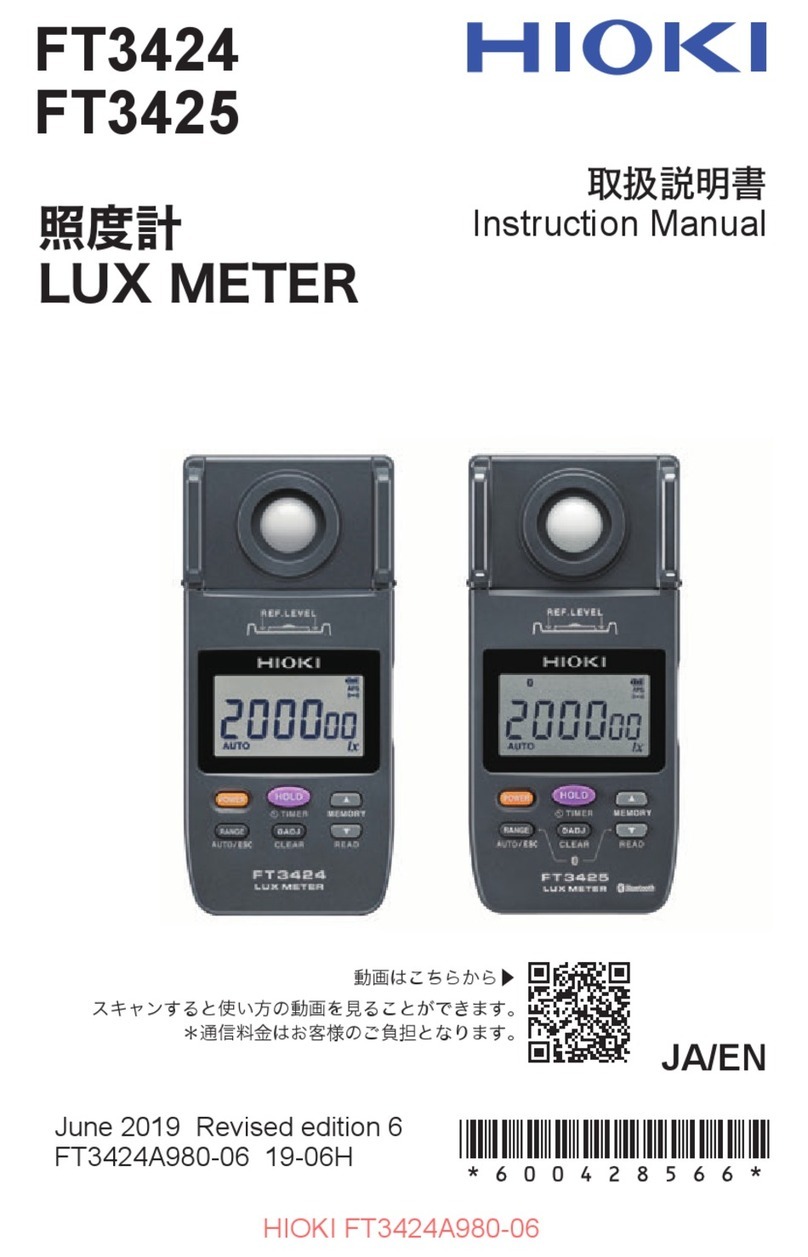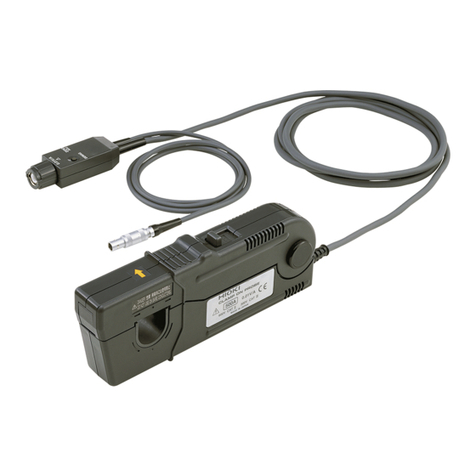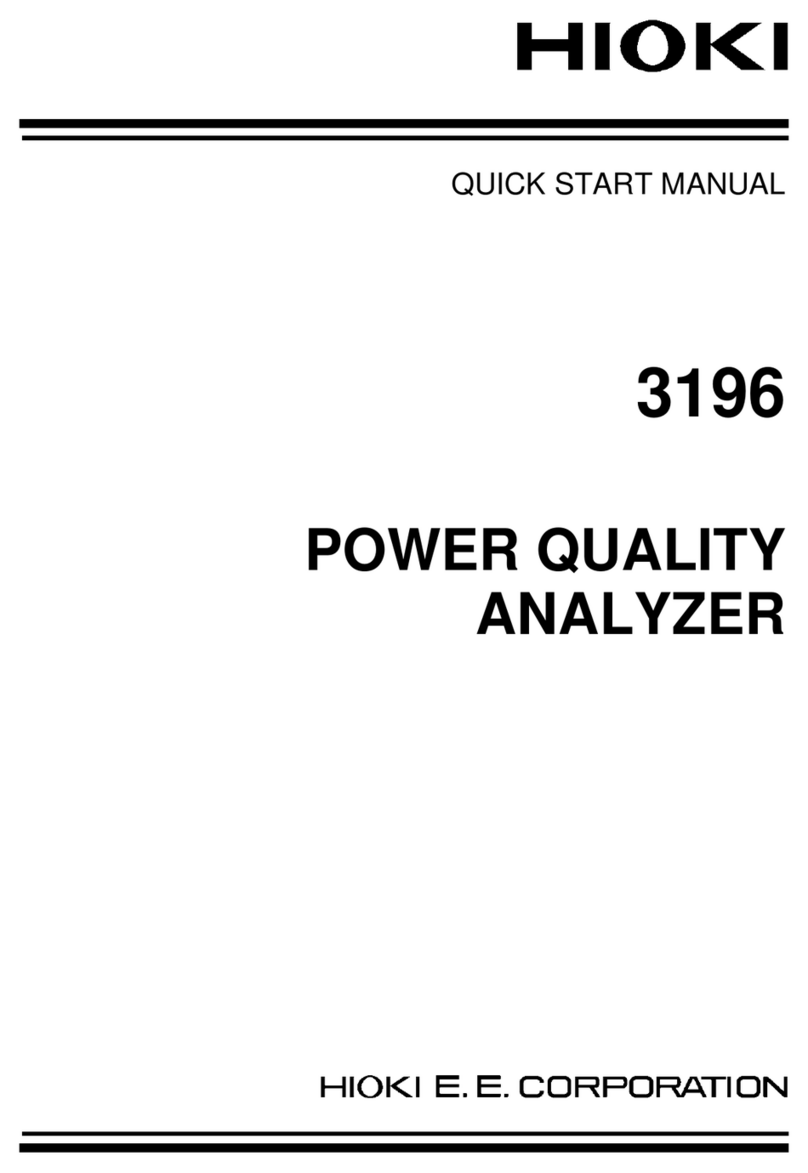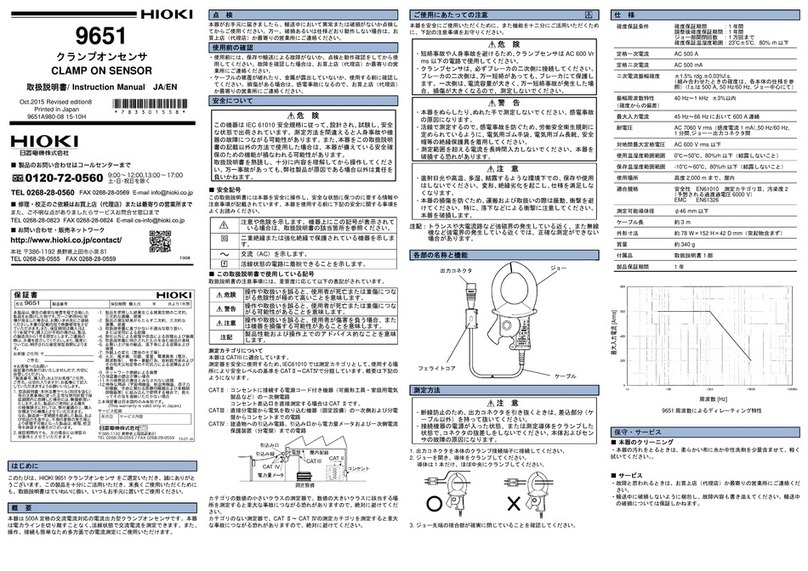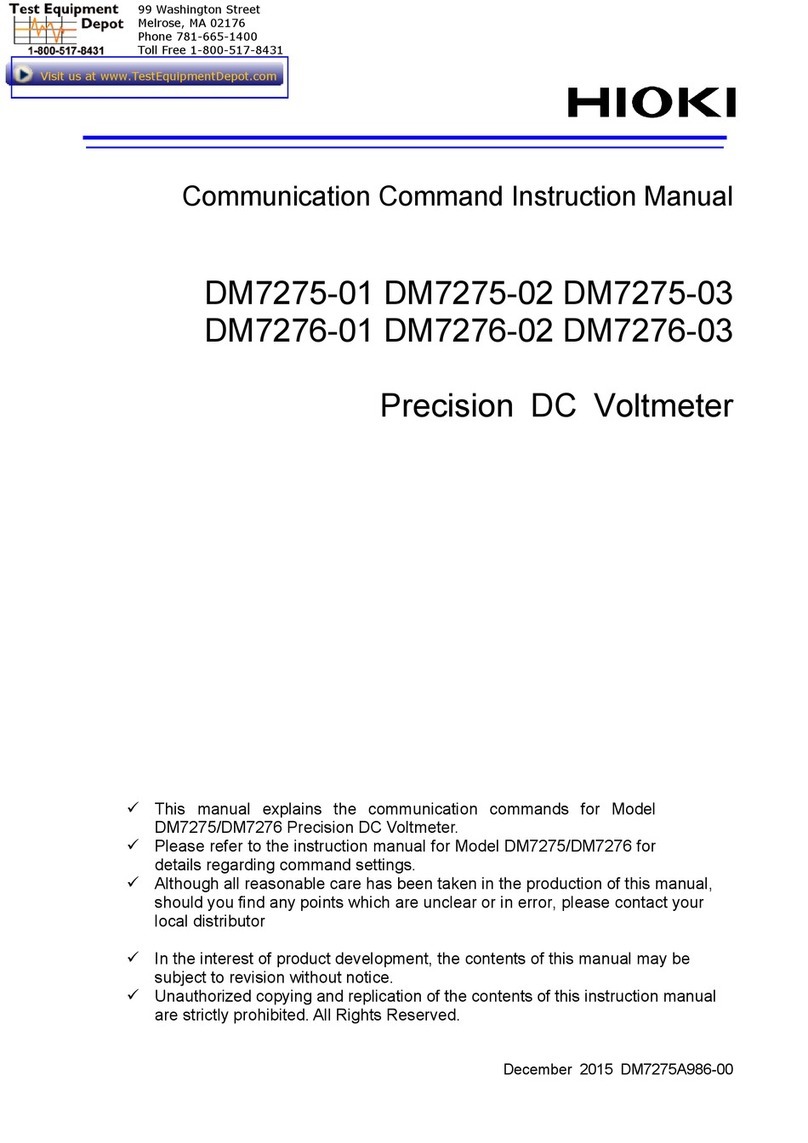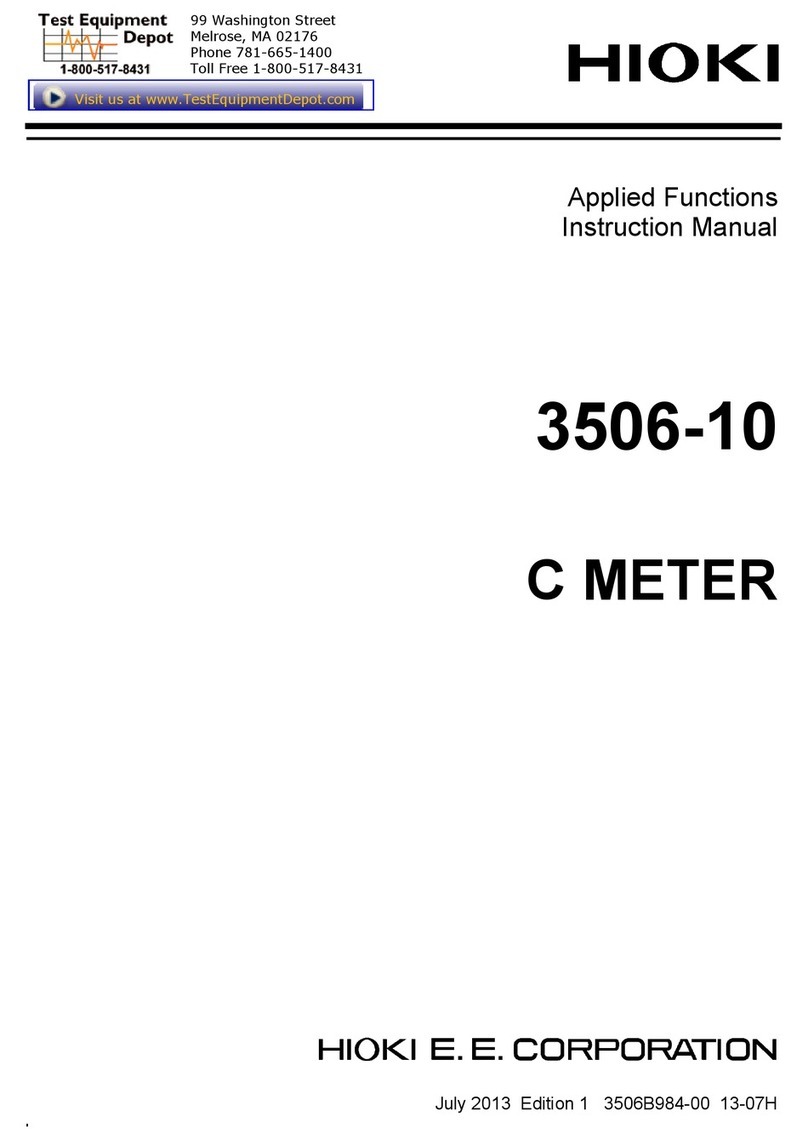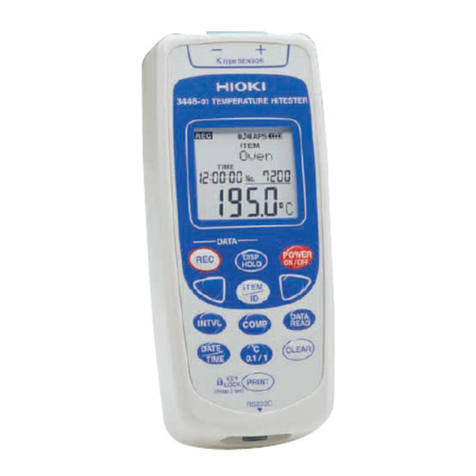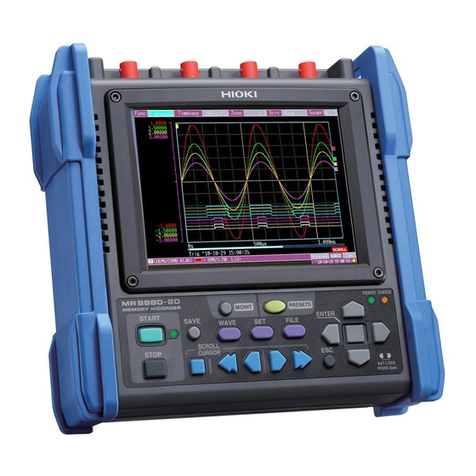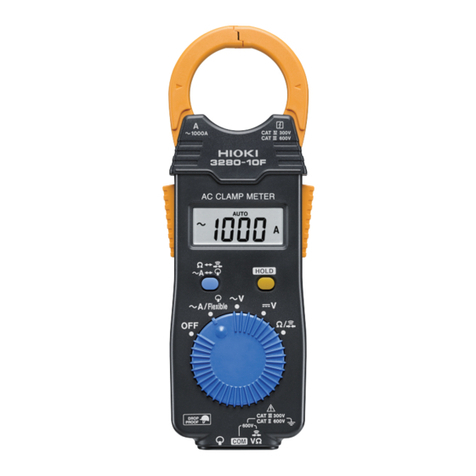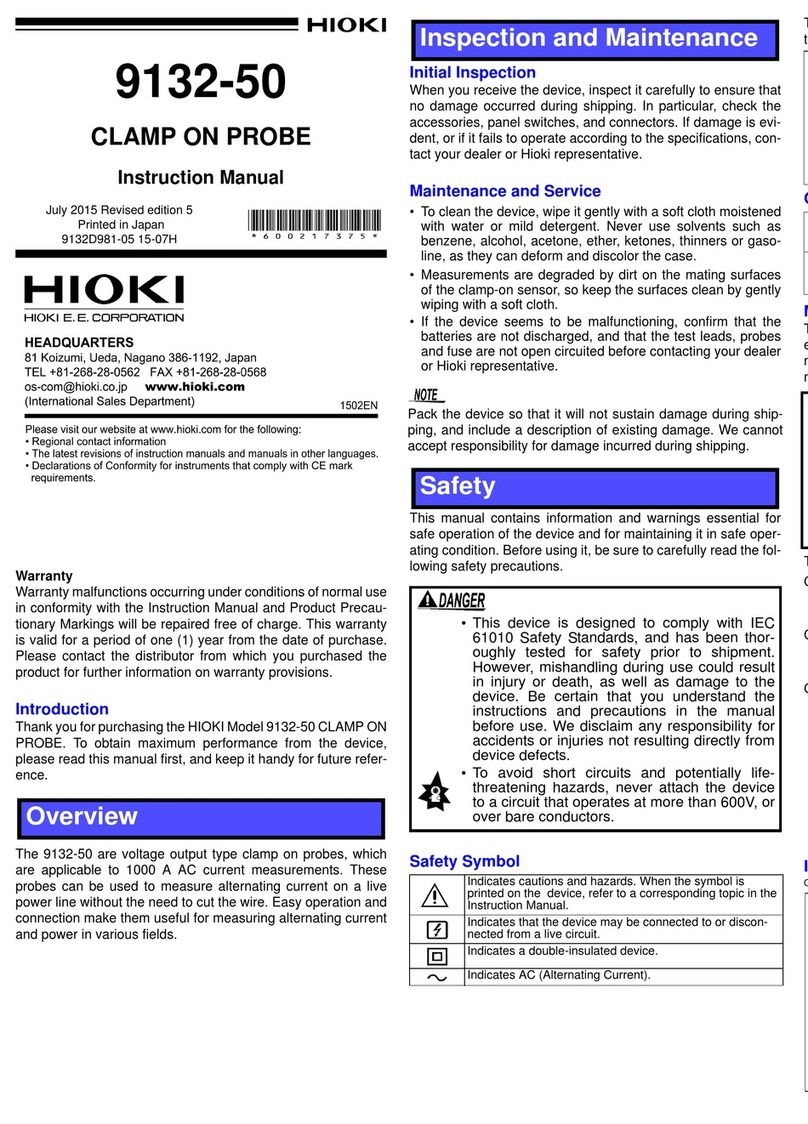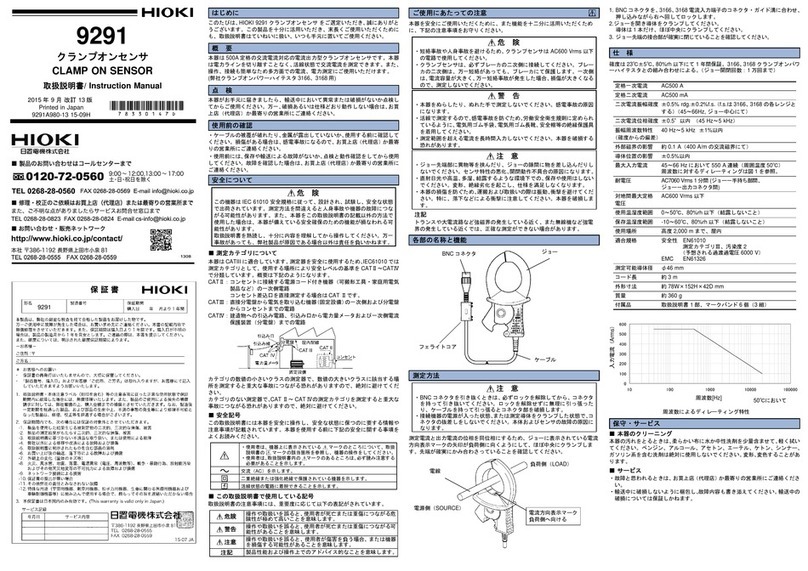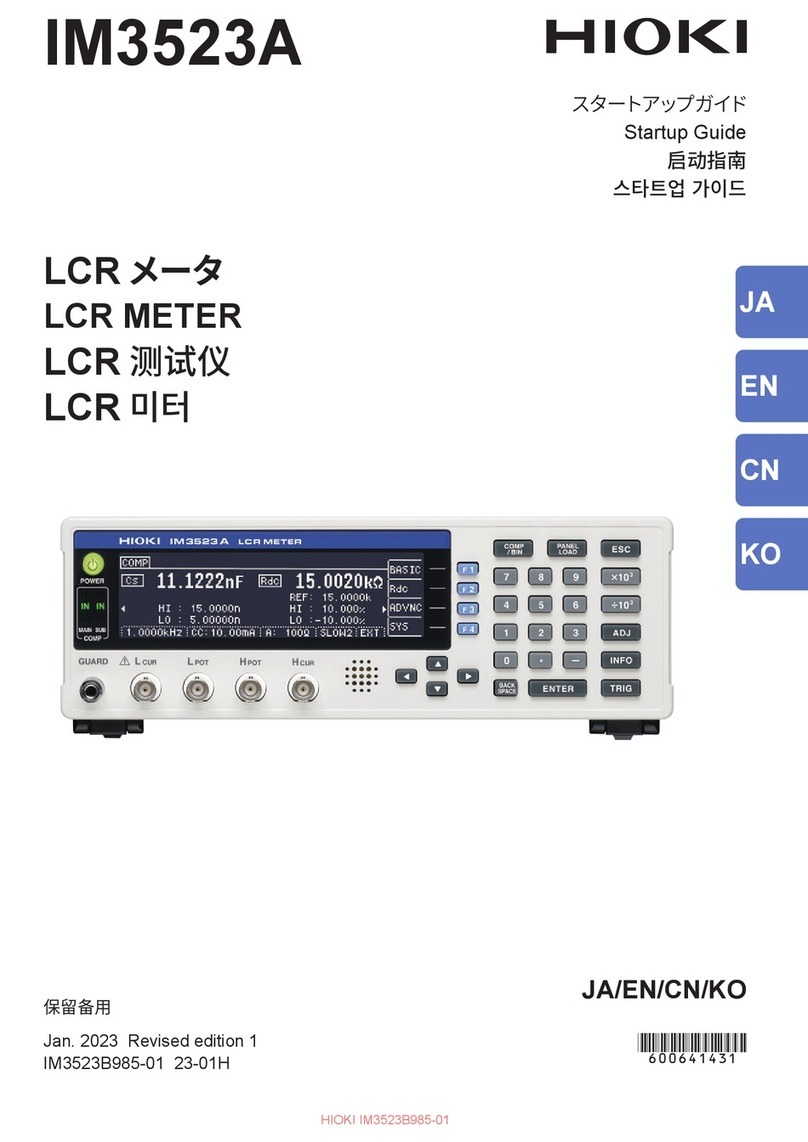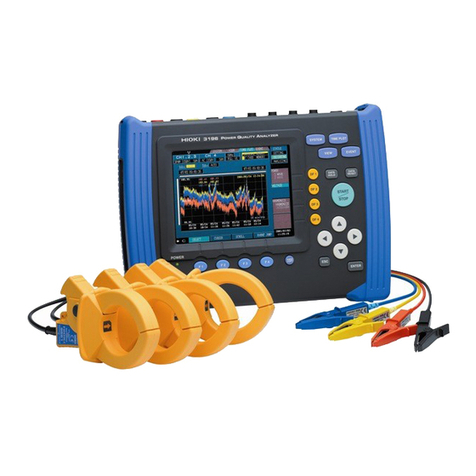
i
3.3 Modulation Frequency Measurement41
Modulation frequency measurement
settings.....................................................41
Modulation frequency measurement
execution and modulation frequency
settings.....................................................41
3.4 Dark Measurement...............................42
Dark measurement settings.......................42
Executing the dark measurement ..............43
4 Normal Measurement 45
4.1 Adjusting the White Balance of
the Light Source (White Balance
Adjustment Assistance Function).......46
4.2 Precaution .............................................48
Measurement status .................................48
When a single color light enters or when
a light with large radiometric quantity of
only one color enters.................................49
5 External Control 51
5.1 External Input Terminals and Signals 51
5.2 InternalCircuitConguration ..............53
5.3 Frequently Asked Questions about
External Input........................................54
6 Application Software
(RGBLaserUtility) 55
6.1 Startup Procedure ................................56
Screenconguration(Maindialog) ............56
6.2 Setting the LAN.....................................57
6.3 Measured Value Capture Settings .....58
6.4 Measurement Settings.........................60
6.5 Chromaticity xy Chart Display ............67
6.6 Modulation Frequency Measurement68
6.7 Dark Measurement...............................69
6.8 Normal Measurement ..........................70
Executing the normal measurement ..........70
Measurement range optimization...............71
Capturing the measured values.................72
Measured values of each color..................76
Measured values of RGB mixed light.........77
Overall judgment display...........................78
Modulation frequency display during
measurement ...........................................78
6.9 Exiting the Application Software.........78
6.10 Others ....................................................79
Self-test....................................................79
Starting RGBLaserUtility by specifying
themeasurementsettingle(.dcmle) .....80
Contents
Introduction........................................................1
ConrmingPackageContents........................2
Measurement Flowchart ..................................3
Safety Notes......................................................4
Usage Notes......................................................6
1 Overview 11
1.1 Overview and Features .......................11
1.2 Model TM6102 RGB Laser Meter ......12
Parts Names and Functions ......................13
Dimensions ..............................................14
1.3 TM6103 RGB Laser Luminance
Meter ......................................................16
Parts Names and Functions ......................17
Dimensions ..............................................18
1.4 Model TM6104 Optical Power Meter.20
Parts Names and Functions ......................21
Dimensions ..............................................22
2 Preparations 25
2.1 Inspection Before Measurement ........25
2.2 Connecting the AC Adapter and
Power Cord ...........................................26
2.3 Setting the Communication Setting
Mode ......................................................26
2.4 Turning ON/OFF the Power ................27
2.5 Installing the Application Software .....28
Recommended computer operating
environment..............................................28
Installation ................................................28
Uninstallation............................................28
2.6 Using a LAN ..........................................29
Constructing the network environment.......29
Connecting the LAN cable.........................30
Setting the LAN ........................................31
3 Measurement
Condition Settings 35
3.1 Various Settings....................................35
Settings related to trigger ..........................35
Measurement mode settings .....................36
Settings common to normal
measurement and dark measurement .......36
Normal measurement settings...................37
3.2 Correction Functions............................38
Centroid wavelength input mode ...............39
Centroid wavelength offset correction........39
Radiometric quantity gain correction..........40
Chromaticity xy offset correction................40
Photometric quantity gain correction..........40
TM6102A961-01
10
9
8
7
6
5
4
3
2
1
Appx.Index
10
